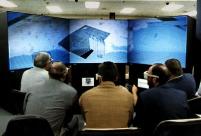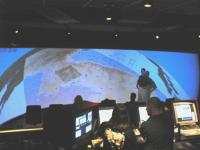Systems
& Scientific Software
Here
are a few notes, photographs, screen captures and links describing some of
the projects I've been involved with in more detail.
RAPTOR
An extremely powerful battlespace
visualization system that runs on commodity hardware (high-end PCs running
Linux.) Here are some screen captures showing two video feeds from
aerial reconnaissance projected onto the terrain. Of course, this is all
running at 30 Hz. Not shown is the fact that the system implements shadow
masking for correct line-of-sight occlusion. The light blue "Z" symbols on
stalks represent the aerial platforms while the white lines extending towards
the ground delimit the projection frustum. Notice that the video does not
exactly georegister to the underlying imagery due to errors in the data streams
describing the platform positions.
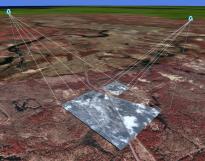
|
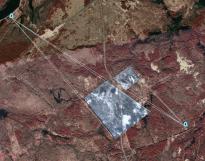
|
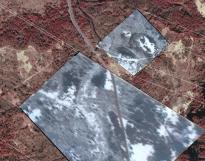
|
Oblique
View
|
Overhead
View
|
Zoomed View
|
Kewazinga
A system for capturing video of
an event from multiple cameras and playing it back through an application
that allows the viewer to manipulate time and camera angles in real time
ala the "bullet time" effect from the movie "The Matrix." I wrote the software
that controls the large cluster of computers that capture video from the
array of video cameras. It does capture and preview for the video and provides
the framework for using the cluster to do the "tweening": synthesizing frames
for viewpoints that lie between the camera positions. It was done in C++
using DCOM and MFC on Windows NT in about two months. The company that sells
this system can be found here (warning:
Flash-only site.)
Genie
A system for measuring the shape,
volume and velocity of droplets emitted by inkjet printer heads. The software
(C++, MFC) drives a high speed D/A board (to drive the printer head) and
a higher speed A/D board (to measure the output of two photosensors.) Here's
an early screen capture of part of the user interface. The software for this system was designed
and developed in about two months in parallel with the hardware.
JOVE
Another battlespace visualization
system; this one runs on an SGI Onyx2 driving a panoramic, stereoscopic immersive
display system. Here are two photographs of the system in action:
And here's a link to an article, "New Display
Advances Brighten Situational Awareness Picture", in Signal Magazine,
August 1998.
My colleagues and I wrote a paper describing
some aspects of the system.
Directed
Search Testbed
A system for area search of huge
satellite image mosaics. Running on a SGI deskside Onyx RealityEngine2, the
system implemented an electronic light table core (allowing continuous roam,
zoom, rotation and convolution) onto which a variety of different input and
output devices were interfaced to test their effectiveness in aiding the
search task. Design and development started in April of 1994 and in September
the system was presented to members of Congress as part of a program intended
to transition some technology developed for the intelligence
community to the medical community:
United States Public
Health Service. Office on Women's Health. (1996). From missiles to mammograms
: a Capitol Hill briefing : new frontiers in breast cancer imaging and early
detection : September 17, 1996. Washington, D.C.
The system, designed for things
like searching for Scud missile launchers, got repurposed for looking at
mammograms.
Part of the fun of this project was the massive media coverage:
Time Magazine, October
17, 1994, "Finally, a Peace Dividend (and from
the Embattled CIA, No Less)".
Time Magazine, March 20, 1995, "Spies In Cyberspace".
NBC Evening News, April 4, 1995.
CBS This Morning, April 5, 1995.
ABC Good Morning America, April 5, 1995.
Copyright
(c) 2013 Systems & Scientific Software. All rights reserved.






